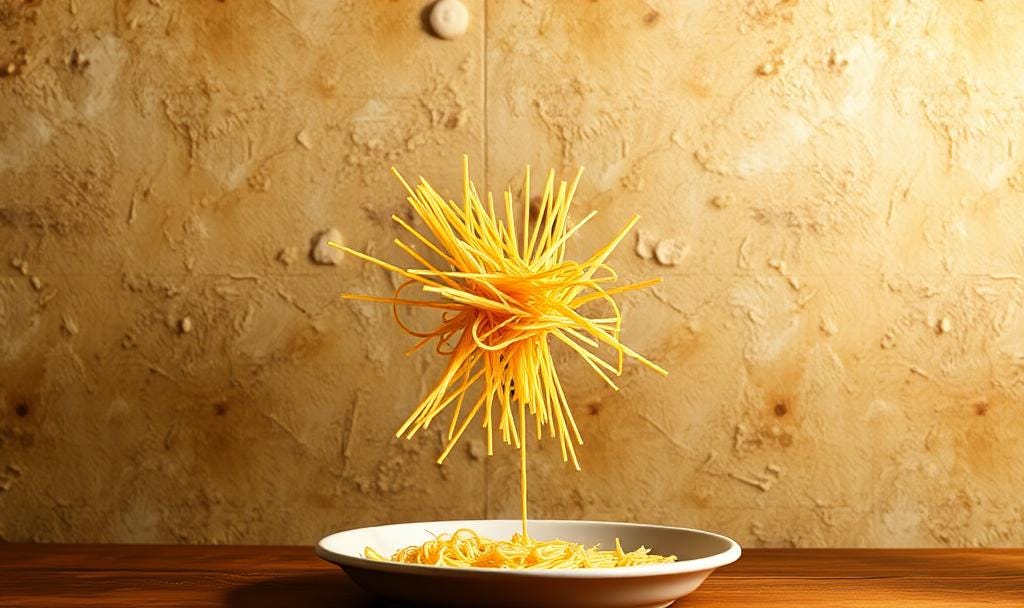Trump's spaghetti-test presidency
Throwing stuff at the wall turns into a recipe for chaos
Food historian Luca Cesari wrote in 2017 that Italians living abroad are almost invariably asked about testing the doneness of pasta by throwing it against the wall to see if it sticks.
No serious chef would ever use that test. The idea is bogus, but as Cesari noted in an Italian-language post (thanks Google Translate!), “like all urban legends, this one must also contain a grain of truth, otherwise it would be inexplicable why this picturesque story continues to be repeated outside the peninsula” of Italy.
While chefs today almost always prefer pasta that still has a bit of bite to it (“al dente”), that was not always the case. Sticky, doughy pasta was once the norm. Cesari cited 19th century cookbooks that prescribed cooking pasta for 30 minutes, 45 minutes and in one case, even an hour.
Recipes aside, the spaghetti test has migrated from a folk tale to a marketing strategy. Throwing many things at the wall to see what sticks can be viewed as a fruitful research technique, even though…
Keep reading with a 7-day free trial
Subscribe to Now It's History to keep reading this post and get 7 days of free access to the full post archives.



